One might think that the beauty of a marigold flower, followed by its brightly colored petals, holds a great attraction towards hummingbirds. However, it appears that these charming little birds have some preferences when it comes to their food choices. Hummingbirds don’t love marigolds because the flower does not feature a tubular shape. Therefore, the bird’s delicate bill is unable to slurp up all its delicious nectar.
Marigolds may not be the flower for hummingbirds, but there is an assortment of flowers waiting for these sugar junkies to indulge in a sweet feast of nectar.
Why Hummingbirds Don’t Love Marigolds
Hummingbirds are always searching for flowers with nectar that provides them with a burst of energy. This helps them keep up with their metabolism and constant flying. However, marigold nectar tends to have less sugar compared to other blossoms that hummingbirds absolutely love. It’s like offering them a protein bar when what they truly desire is a sweet treat!
Furthermore, hummingbirds are particularly attracted to shades of red, pink, yellow, and orange, which serve as their targeted food source. Although marigolds do possess some of these colors, they may not stand out prominently in the hummingbird’s color-oriented environment.
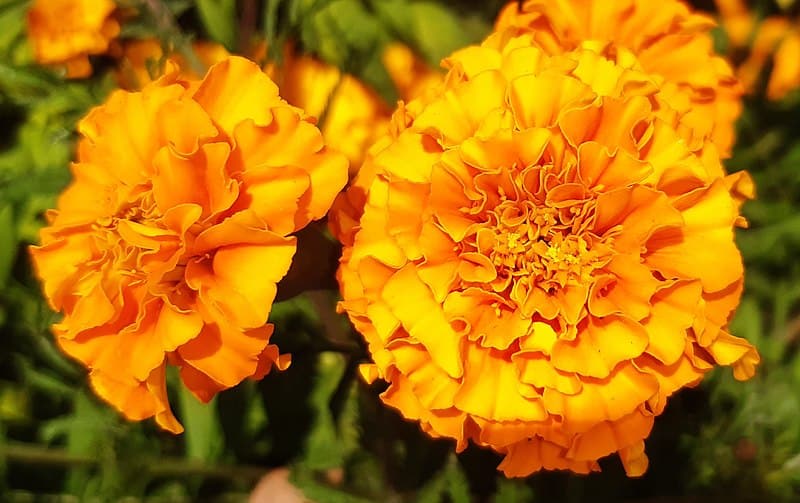
Marigold nectar holds less sugar compared to other blossoms for hummingbirds.
Flowers that Hummingbirds Love
- Honeysuckle
- Penstemon
- Beebalm
- Fuchsia
- Trumpet vine
1. Honeysuckle
Honeysuckle, scientifically referred to as Lonicera, is a climbing plant that includes more than 180 species. These plants display a trumpet petal shape and come in various colors, like white, yellow, pink, and red. Honeysuckle flowers thrive in gardens, parks, and natural habitats across North America, Europe, Asia, and some parts of Africa. In addition, people adore them for their delightful fragrance and their uses for natural skincare.
Hummingbirds love honeysuckle flowers because the tube of the flowers is the perfect fit for these birds’ elongated bills. Therefore allowing their long tongue to extend inside the honeysuckle and collect the nectar.
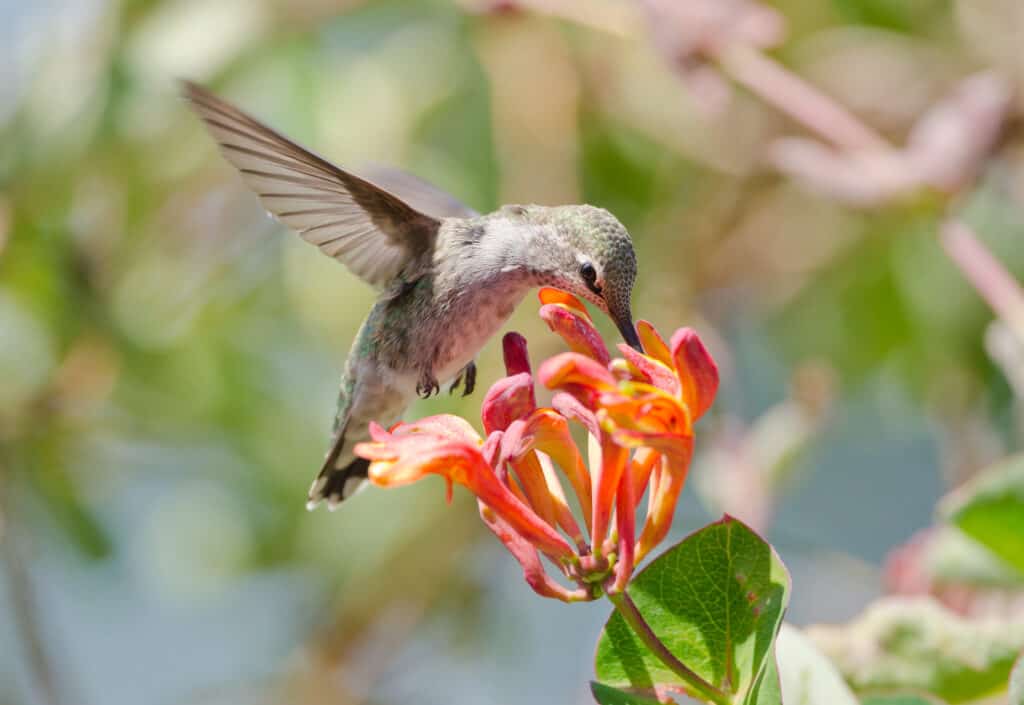
A hummingbird can visit around 1,000 flowers in a single day.
©Birdiegal/Shutterstock.com
2. Penstemon
Penstemon, also known as beardtongue, comes in a collection of over 250 species found throughout North and Central America. These beautiful flowers grow in environments ranging from dry deserts to sky-high mountain meadows. In addition, penstemon blossoms in colors of purple, red, pink, and white.
Hummingbirds love penstemon flowers because of their unique landing platform. There are four stamens for pollen and one extra stamen that doesn’t have pollen. This extra stamen acts like a little perch for the hummingbirds when they visit the flowers.

Penstemon grow in environments ranging from dry deserts to sky-high mountain meadows.
©Nahhana/Shutterstock.com
3. Beebalm
Bee balm, also known as Monarda, is home to North America. It boasts flowers in shades of red, pink, purple, and white, which add a touch of beauty to any space. Did you know that Native Americans use the leaves of bee balm to create soothing teas that assist with sore muscles and congestion? What an interesting way to use natural resources. Apart from this, hummingbirds, butterflies, and bees simply can’t resist stopping by for a visit to see what bee balm has to offer.
Hummingbirds are known to be quite territorial when it comes to feeding from bee balm flowers. They often defend their favorite flowers from other birds and insects, performing impressive aerial acrobatics to keep intruders away.
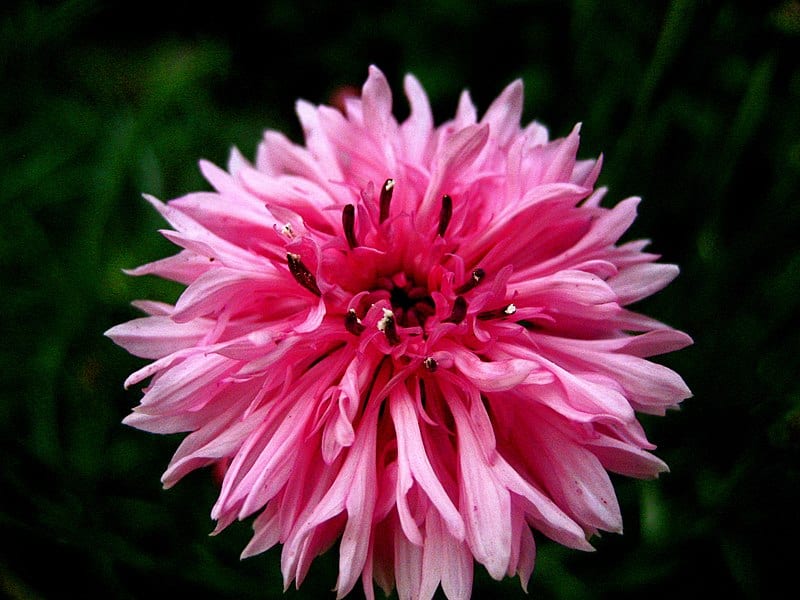
Bee balm boasts flowers in shades of red, pink, purple, and white, which add a touch of beauty to any space.
4. Fuchsia
Fuchsia flowers flourish in parts of America and New Zealand. Their bell-like shape, long tubes, and delicate petals make them a favorite among hummingbirds. Fuchsia plants are so versatile because even after planting them, they will continue to grow year after year. In addition, as they grow, their flexible stem adapts well to hanging baskets and window boxes.
Hummingbirds love fuchsia flowers because they offer a surprise. Their petals come in more than one color! While the outer petals may sport one color, the inner petals can showcase a different shade. This unique characteristic makes fuchsia flowers all the more fascinating for both hummingbirds and individuals who enjoy observing them.
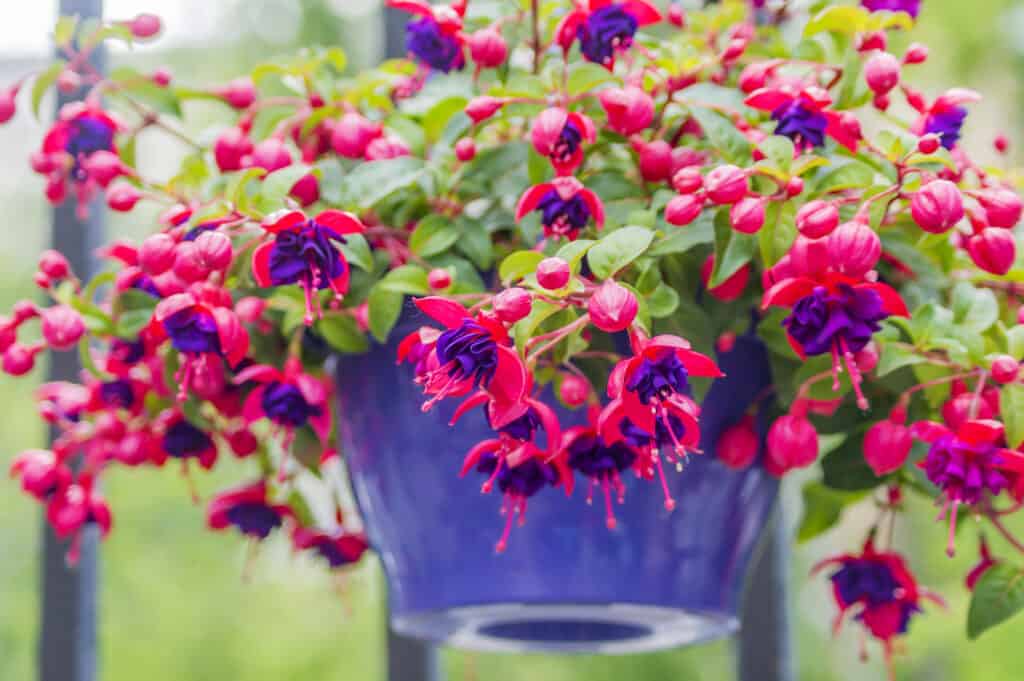
As fuchsia flowers grow, their flexible stem adapts well to hanging baskets and window boxes.
©iStock.com/IKvyatkovskaya
5. Trumpet vine
The trumpet vine, scientifically known as Campsis radicans, comes from North America. Its petals grow in a trumpet shape, showing off shades of red, orange, or yellow. These flowers hang in clusters where their vigorous growth creeps along trellises and fences, covering large areas with their lush foliage.
When a hummingbird visits a trumpet vine flower, its head often gets dusted with pollen. As a result, the hummingbird transfers pollen and provides the plant with new seeds. So, in fact, hummingbirds play an important role in making more trumpet vine flowers!
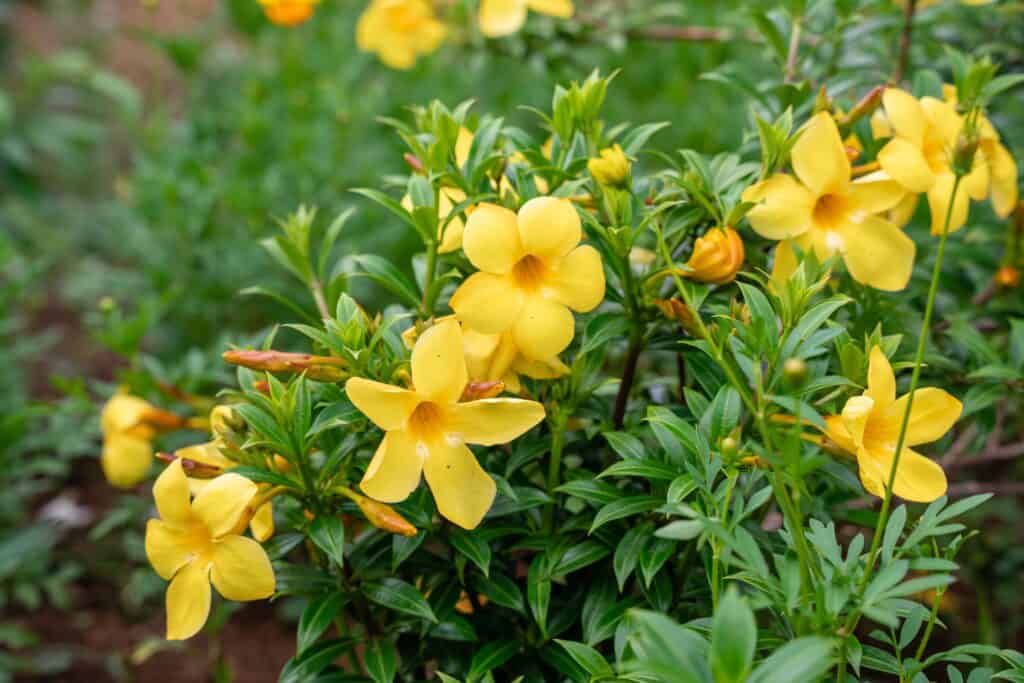
A hummingbird will have a dusting of pollen when they visit a trumpet vine.
©Michaelnero/Shutterstock.com
In Conclusion
So, while marigolds might be the perfect fit for your garden, just remember they’re simply not a hummingbird’s cup of nectar. However, if you do want to attract these energetic birds to your garden, simply add a few of their favorite blooms, as mentioned above.
The photo featured at the top of this post is © Ondrej Prosicky/Shutterstock.com
Thank you for reading! Have some feedback for us? Contact the AZ Animals editorial team.







